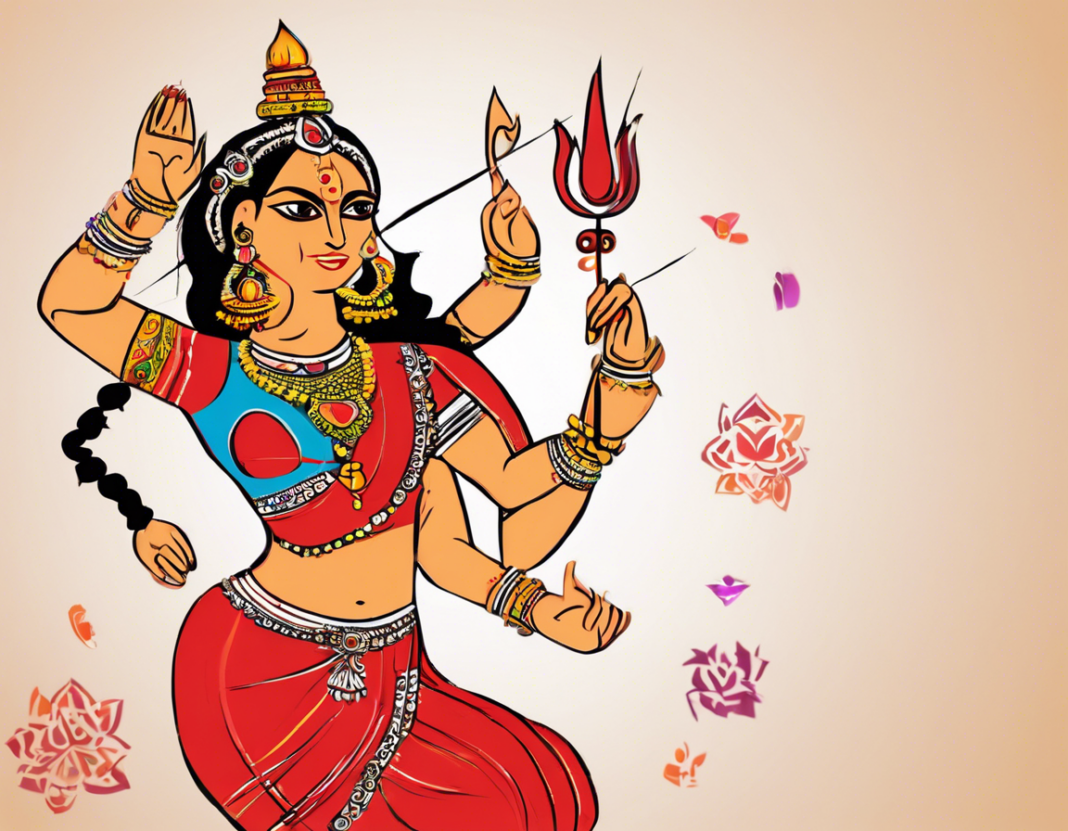Navratri 2023: October Dates, Significance & Celebrations
Navratri, also known as the festival of nine nights, is a significant Hindu festival celebrated with much fervor and joy across India and in various parts of the world. The festival is dedicated to the worship of Goddess Durga and her nine forms, with each day symbolizing the worship of a different form of the goddess. Navratri is observed twice a year, once in the month of Chaitra (March-April) and then in the month of Ashwin (September-October). In 2023, Navratri will be celebrated in October, with festivities beginning on the 1st of October.
Significance of Navratri
Navratri holds immense spiritual and cultural significance in Hinduism. It symbolizes the victory of good over evil and is believed to be a propitious time for spiritual growth and inner transformation. The nine days and nights of Navratri are dedicated to different manifestations of Goddess Durga, with each form representing distinct qualities and attributes that devotees seek to invoke and imbibe.
Dates for Navratri 2023
Navratri in 2023 will commence on Saturday, 1st October and conclude on Sunday, 9th October with Vijayadashami (Dussehra) falling on the 10th of October. The festival spans nine days and each day is associated with the worship of a specific form of Goddess Durga, known as Navadurga.
Navratri Celebrations
Navratri is celebrated with immense zeal and enthusiasm across India and various parts of the world where the Indian diaspora resides. The festival is marked by devotional music, traditional dances like Garba and Dandiya Raas, colorful decorations, fasting, and prayers. Temples are adorned with flowers, lights, and garlands, and devotees throng to offer their prayers to the Goddess.
Key traditions and practices observed during Navratri include:
– Fasting: Many devotees observe fasts during Navratri, abstaining from certain foods for the entire duration of the festival.
– Garba and Dandiya Raas: These traditional folk dances are an integral part of Navratri celebrations, where men and women come together to dance in circles with colorful sticks or holding hands in rhythmic movements.
– Kanya Pujan: On Ashtami (the eighth day), young girls are worshipped as manifestations of Goddess Durga in a ritual known as Kanya Pujan.
– Rama Leela: In some parts of India, enactments of the legendary story of Lord Rama, known as Rama Leela, are performed during Navratri.
Navratri Colors for 2023
Each day of Navratri is associated with a specific color that devotees wear to symbolize the special significance of that day. The colors for Navratri 2023 are as follows:
1. Day 1 (1st October) – Yellow
2. Day 2 (2nd October) – Green
3. Day 3 (3rd October) – Grey
4. Day 4 (4th October) – Orange
5. Day 5 (5th October) – White
6. Day 6 (6th October) – Red
7. Day 7 (7th October) – Royal Blue
8. Day 8 (8th October) – Pink
9. Day 9 (9th October) – Purple
FAQs (Frequently Asked Questions)
1. What is the significance of Navratri?
Navratri symbolizes the victory of good over evil and is a time for spiritual growth and renewal. It is dedicated to the worship of Goddess Durga and her nine forms.
2. How is Navratri celebrated?
Navratri is celebrated with devotional music, traditional dances like Garba and Dandiya Raas, fasting, prayers, and colorful decorations. Each day is associated with the worship of a specific form of Goddess Durga.
3. Why are different colors associated with each day of Navratri?
The colors associated with each day of Navratri hold symbolic significance and are believed to represent the special qualities of that particular day.
4. Can anyone participate in Navratri celebrations?
Yes, Navratri celebrations are inclusive and open to all. People from all walks of life come together to celebrate the festival with joy and reverence.
5. Is fasting compulsory during Navratri?
Fasting during Navratri is a personal choice and not compulsory. Many devotees observe fasts as a form of devotion and purification.
6. What are some popular dishes eaten during Navratri fasting?
Some popular dishes eaten during Navratri fasting include Sabudana Khichdi, Kuttu Ki Puri, Singhare Ke Atte Ka Samosa, and fruits.
7. Are there any specific rituals for Navratri that need to be followed?
While there are common rituals like daily prayers and visiting temples, specific customs and traditions may vary based on regional and family traditions.
8. Can non-Hindus participate in Navratri celebrations?
Yes, Navratri celebrations are open to people of all backgrounds and faiths. It is a festival that welcomes everyone to join in the festivities.
9. What is the significance of Garba and Dandiya Raas during Navratri?
Garba and Dandiya Raas are traditional folk dances that symbolize the joyous celebration of Navratri. These dances are a way for people to come together, rejoice, and express devotion to the Goddess.
10. Is there a specific way to perform the daily prayers during Navratri?
While there is no strict rule on how to perform daily prayers during Navratri, devotees often recite special prayers dedicated to Goddess Durga and her various forms, seeking her blessings and grace.
In conclusion, Navratri is a vibrant and auspicious festival that brings people together in celebration, devotion, and spiritual reverence. The nine days of Navratri are a time of reflection, prayer, and joy as devotees seek blessings and grace from Goddess Durga. The colorful traditions, festive dances, and rituals associated with Navratri make it a truly special and unforgettable experience for all who participate.
